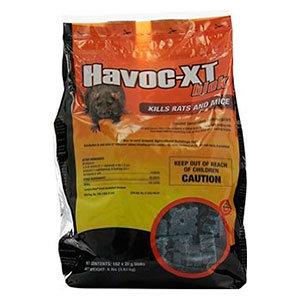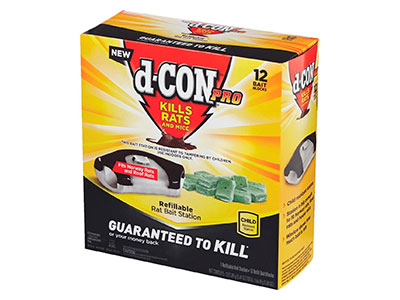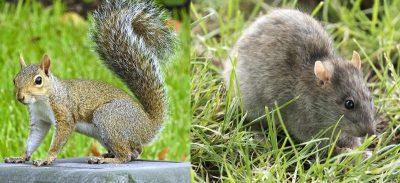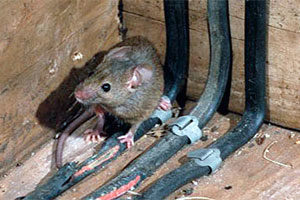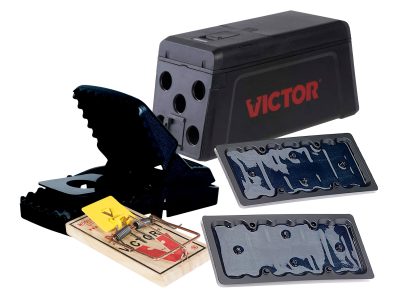Dealing with a rat infestation requires effective tools and the right approach. This comprehensive guide explores the most powerful rat poisons and baits available today, comparing active ingredients, delivery methods, and safety considerations to help you select the perfect solution for your specific rat problem. Whether you’re facing a minor nuisance or a severe infestation, our expert recommendations will help you eliminate these destructive pests once and for all. In addition to poisons and baits, it’s crucial to consider prevention methods that can keep rats at bay. This guide also highlights the best rat repellents for outdoor use, ensuring that your yard and garden remain pest-free. By employing a combination of lethal and non-lethal strategies, you can create an environment that is hostile to these unwanted guests.
Quick Picks: Best Rat Poisons & Baits

Editor’s Choice

People’s Choice

Best Bait Station
- Comprehensive Guide to Rat Poisons and Baits in 2025
- Understanding Rat Poison Active Ingredients
- Top Rat Poison Products Reviewed
- Best Rat Bait Stations for Safe and Effective Control
- Understanding Rat Feeding Behavior for Effective Baiting
- Safe and Effective Use of Rat Poisons
- Integrated Approach to Rat Control
- Frequently Asked Questions
- When to Call a Professional
- Conclusion
Comprehensive Guide to Rat Poisons and Baits in 2025
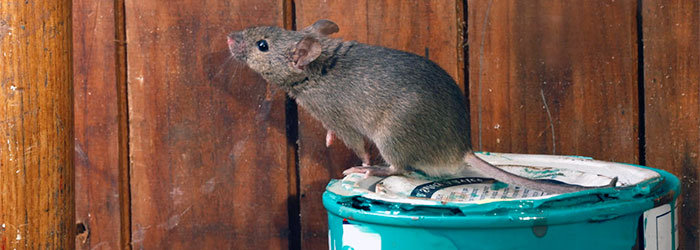
Rats are more than just unsettling pests—they’re disease carriers and destructive invaders capable of causing extensive damage to your property. These intelligent rodents multiply rapidly, with a female rat capable of producing up to 50-60 offspring annually. Without prompt intervention, a minor rat sighting can quickly escalate into a full-blown infestation.
While rat traps can be effective for smaller problems, poison baits often provide the most comprehensive solution for eliminating larger rat populations. This guide examines the most effective rat poison and bait products available today, comparing active ingredients, delivery methods, and safety considerations to help you select the ideal solution for your specific situation.
| Product | Active Ingredient | Type | Kill Time | Best For |
|---|---|---|---|---|
| JT Eaton Bait Block | Diphacinone (0.005%) | Bait Blocks | 4-6 days | Indoor/Outdoor, Peanut butter flavor |
| Neogen Ramik Green | Diphacinone (0.005%) | Bait Packs | 4-5 days | Fish flavor, Weather-resistant |
| JT Eaton Top Gun | Bromethalin (0.01%) | Bait Blocks | 1-2 days | Fast-acting, Single-feeding |
| Neogen Havoc-XT | Brodifacoum (0.005%) | Bait Blocks | 4-5 days | Resistant rat populations |
| d-CON Refillable Station | Cholecalciferol (0.075%) | Bait Station + Blocks | 2-5 days | Indoor use, Child-resistant |
| Tomcat Refillable Station | Bromethalin (0.01%) | Bait Station + Blocks | 1-2 days | Indoor/Outdoor, Pet-safe station |
Understanding Rat Poison Active Ingredients
Before selecting a rat poison, it’s important to understand the different types of active ingredients and how they work. The effectiveness, speed, and safety considerations vary significantly between different rodenticide formulations.
First-Generation Anticoagulants
Examples include Diphacinone and Chlorophacinone. These require multiple feedings to deliver a lethal dose and work by preventing blood clotting, causing internal bleeding. Death typically occurs 4-7 days after initial consumption. Lower risk of secondary poisoning to predators.
Second-Generation Anticoagulants
Examples include Brodifacoum and Bromadiolone. More potent than first-generation products, these can deliver a lethal dose in a single feeding. They also work by preventing blood clotting but pose a higher risk of secondary poisoning to wildlife that might consume poisoned rats.
Acute Toxicants
Examples include Bromethalin and Cholecalciferol (Vitamin D3). These work through different mechanisms—Bromethalin affects the nervous system while Cholecalciferol causes hypercalcemia. Both can be lethal with a single feeding and act more quickly than anticoagulants (1-3 days).
Top Rat Poison Products Reviewed
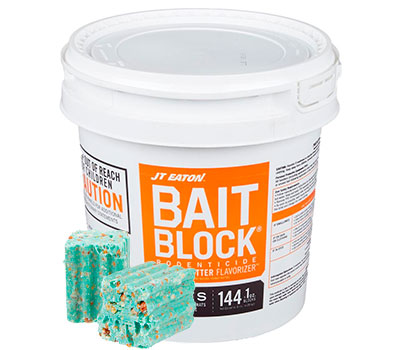
JT Eaton Bait Block Rodenticide
- First-generation anticoagulant (Diphacinone)
- Peanut butter flavor highly attractive to rats
- 144 weather-resistant 1-ounce blocks
- Indoor/outdoor application
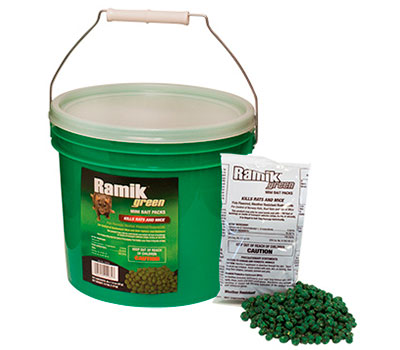
Neogen Ramik Green Mini Bait Packs
- First-generation anticoagulant (Diphacinone)
- Fish-flavored formula in ready-to-use packs
- Highly weather-resistant for outdoor use
- 45 bait packs per container
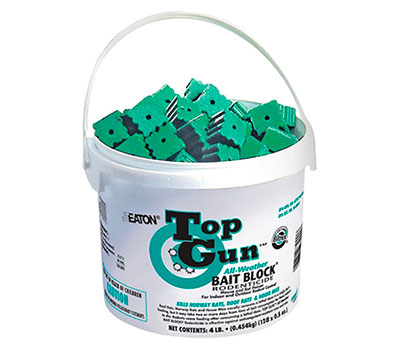
JT Eaton Top Gun All-Weather Rodenticide
- Acute toxicant (Bromethalin)
- Single-feeding formula kills in 1-2 days
- 128 weatherproof bait blocks (0.5 oz each)
- Affordable price point for large infestations
JT Eaton Bait Block Rodenticide
Editor's ChoiceHow Does It Work
How to Use
- Place blocks in areas with rat activity—along walls, in corners, or near burrows
- Use tamper-resistant bait stations to prevent access by children, pets, and non-target wildlife
- Position 2-4 blocks per station depending on infestation level
- Check stations every 3-5 days and replenish as needed
- Continue baiting until all rat activity has ceased for at least one week
- Highly palatable peanut butter formula rats readily consume
- Effective for both Norway rats and roof rats
- Weather-resistant for both indoor and outdoor use
- Lower toxicity and secondary poisoning risk compared to second-generation anticoagulants
- Comes with a one-year limited warranty
- Requires multiple feedings over several days for lethal effect
- Slower acting than acute toxicants like Bromethalin
- Requires more bait per rat compared to single-feeding products
- Must be kept dry for maximum effectiveness
Neogen Ramik Green Mini Bait Packs
People's ChoiceHow Does It Work
How to Use
- Place bait packs in tamper-resistant bait stations to protect from children, pets, and wildlife
- Position stations near burrows, along walls, and in areas showing rat activity
- For outdoor applications, secure stations within 100 feet of buildings
- Check stations every 3-4 days and replace consumed packs
- Continue baiting until all rat activity has ceased
- Exceptional weather resistance for use in damp environments
- No need to handle bait directly—rats chew through packaging
- Highly palatable fish flavor that attracts rats
- Convenient ready-to-use bait packs
- Effective for both indoor and outdoor applications
- Requires multiple feedings over several days
- Fish scent may be noticeable when first placed
- Takes 4-5 days for full effectiveness after lethal dose
- May require more frequent replacement in high-moisture environments
JT Eaton Top Gun All-Weather Rodenticide
Fastest ActingHow Does It Work
How to Use
- Always place blocks in tamper-resistant bait stations
- Position stations along walls, in corners, and other areas with rat activity
- Use 1-2 blocks per station—less product is needed compared to anticoagulants
- Check stations every 2-3 days and replace consumed bait
- Continue baiting for at least one week to ensure all rats have access to bait
- Fast-acting formula eliminates rats in 1-2 days
- Single-feeding mechanism requires less bait
- Weatherproof design for indoor/outdoor use
- Economical price point for large infestations
- Effective against anticoagulant-resistant rat populations
- No antidote available for accidental poisoning
- Higher risk of secondary poisoning to wildlife and pets
- Must be used with extreme caution around children and pets
- Some rats may die in inaccessible locations causing odor issues
Neogen Havoc-XT Rat Bait Blocks
For Resistant PopulationsHow Does It Work
How to Use
- Always use in tamper-resistant bait stations to prevent access by children, pets, and wildlife
- Place stations in areas with rat activity—along walls, near burrows, and in secluded areas
- Position 1-3 blocks per station depending on infestation severity
- Check stations every 3-5 days and replace consumed bait
- Continue baiting until all rat activity has ceased for at least one week
- Extremely effective against resistant rat populations
- Weather-resistant formula for various environments
- Contains Bitrex, a bitter agent to deter consumption by children
- Professional-strength formulation used by exterminators
- Can be lethal with a single feeding
- Higher secondary poisoning risk compared to first-generation anticoagulants
- Restricted usage—primarily for agricultural buildings
- More expensive than some alternative products
- Requires stricter safety precautions due to potency
d-CON Refillable Rat Bait Station
Safest for HomesHow Does It Work
How to Use
- Place the station in areas with rat activity—along walls, in corners, or under furniture
- Position the station with entrances parallel to walls where rats travel
- Insert bait blocks according to package directions
- Check station every 3-5 days and replenish bait as needed
- For indoor use only—not weather-resistant for outdoor applications
- Child and pet-resistant design exceeds EPA safety standards
- No-touch bait refill system for improved safety
- Effective against rats resistant to anticoagulants
- Low-profile design fits in hard-to-reach areas
- Transparent lid allows for easy bait monitoring
- Indoor use only—not suitable for outdoor applications
- More expensive initial investment than loose bait options
- Some users report difficulty opening the station for refilling
- Limited to 12 bait blocks without purchasing refills separately
Best Rat Bait Stations for Safe and Effective Control
Using secure bait stations is not just recommended—it’s essential for responsible rodent control. Bait stations protect poison from the elements while preventing access by children, pets, and non-target wildlife. Here are the most effective bait station options for delivering rodenticides safely:
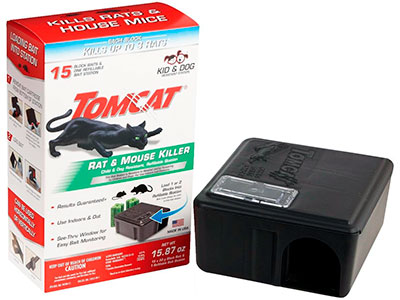
Tomcat Refillable Rat Station
- Includes 15 Bromethalin bait blocks
- See-through monitoring window
- Weather-resistant for indoor/outdoor use
- Child and pet-resistant design
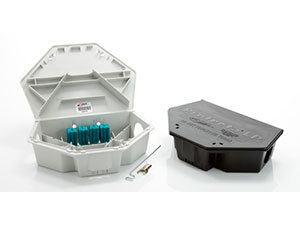
Protecta LP Bait Station
- Triangular design fits corners perfectly
- Holds up to 1 lb of bait or a trap
- Available in multiple colors to blend in
- Commercial-grade durability
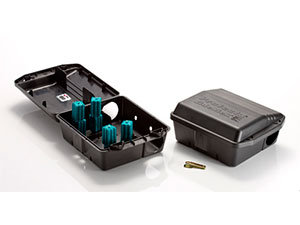
Protecta Sidekick
- Side-opening lid for easy servicing
- Vertical bait rods secure bait blocks
- Compatible with mechanical traps
- Tamper-resistant with locking mechanism
Tomcat Refillable Rat Station
Best All-PurposeHow Does It Work
How to Use
- Place station along walls, in corners, or areas with rat activity
- Position with entrances against walls where rats travel
- Insert 1-3 bait blocks according to package directions
- Secure lid with provided key to prevent tampering
- Check station every 2-3 days and replenish bait as needed
- For severe infestations, place multiple stations 15-30 feet apart
- Complete solution with station and bait included
- See-through window for easy bait monitoring
- Weather-resistant for indoor/outdoor use
- Child and pet-resistant locking mechanism
- Fast-acting Bromethalin formula
- Some users report difficulty opening the station
- Bromethalin has no antidote if accidentally ingested
- May require frequent bait replacement for large infestations
- Plastic construction may deteriorate over time with outdoor use
Protecta LP Bait Station
Professional GradeHow Does It Work
How to Use
- Place station in corners or along walls where rat activity is observed
- Position with entrances facing the wall for optimal rat entry
- Add your choice of poison bait blocks, securing them on the interior rods
- Lock the station with the provided key to prevent tampering
- Check station every 3-7 days and replenish bait as needed
- For severe infestations, place multiple stations 15-30 feet apart
- Commercial-grade durability for long-term use
- Triangular design fits perfectly in corners
- Available in multiple colors to blend with surroundings
- Can hold various bait types or mechanical traps
- Double-locking system for enhanced security
- More expensive than consumer-grade options
- Bait sold separately (not included)
- Larger footprint than some compact stations
- Key can be lost, making station difficult to service
Protecta Sidekick Tamper Proof Bait Station
Easy AccessHow Does It Work
How to Use
- Position station along walls or in corners where rat activity is observed
- Place entrances against the wall for optimal rat entry
- Load bait blocks onto the vertical securing rods
- Close and lock the side-opening lid
- Check station every 5-7 days and replenish bait as needed
- Station can also accommodate a T-Rex Rat Trap for mechanical control
- Side-opening design for fast and convenient servicing
- Vertical bait rods secure poison blocks effectively
- Compatible with mechanical traps for versatile control options
- Professional-grade durability for long-term use
- Suitable for both indoor and outdoor applications
- Higher price point than consumer-grade stations
- Bait sold separately (not included)
- Side-opening design may be less secure than top-opening models
- Bulkier than some lower-profile alternatives
Understanding Rat Feeding Behavior for Effective Baiting
Successful rat control through baiting requires understanding the distinct feeding behaviors and preferences of different rat species. Tailoring your approach to the specific type of rat infestation will significantly improve results.
Roof Rats (Rattus rattus)
Also known as black rats, these excellent climbers typically nest in elevated areas. They prefer plant-based foods including fruits, nuts, berries, and seeds. When baiting roof rats, position stations in elevated locations such as rafters, shelves, and upper levels of structures. Baits with nut-based flavors or dried fruit components are most effective.
Norway Rats (Rattus norvegicus)
Also called brown rats, these burrowing rodents nest at ground level and are excellent swimmers. They have omnivorous diets with preferences for high-protein and high-fat foods. Bait stations should be placed at ground level along walls and corners. Effective bait flavors include peanut butter, bacon, and meat proteins. These rats are less cautious about new objects, making them somewhat easier to bait than roof rats.
Safe and Effective Use of Rat Poisons
While rat poisons are highly effective, proper application and safety measures are essential to protect non-target animals, children, and the environment. Follow these expert-recommended guidelines for responsible rodenticide use:
Never place loose bait directly in the environment. According to the EPA, all rodenticides must be used in tamper-resistant bait stations to prevent access by children, pets, and non-target wildlife. This requirement applies to both indoor and outdoor applications.
Rats are less likely to consume bait if other food is readily available. Secure garbage in rodent-proof containers, remove pet food after feeding, clean up spilled bird seed, and store food products in sealed containers. According to Oregon State University Extension, this step is crucial for effective baiting.
Always wear gloves when handling bait products or stations to prevent contamination and to avoid transferring human scent to the bait. Wash hands thoroughly after handling any rodenticide products, even when wearing gloves.
Keep all rodenticide products in their original containers with labels intact. Store in locked cabinets out of reach of children and pets. Never transfer poisoned bait to unlabeled containers or food containers.
Integrated Approach to Rat Control
For comprehensive rat management, baiting should be just one component of an integrated pest management (IPM) strategy. The Safe Rodent Control organization recommends combining these approaches for optimal results:
Exclusion
Seal all entry points larger than 1/4 inch using steel wool, hardware cloth, or metal flashing. Rats can squeeze through incredibly small openings, so thorough inspection and sealing are essential for long-term control. Focus on areas where utilities enter buildings, damaged vents, and gaps under doors.
Sanitation
Remove food sources, water, and potential nesting materials. Keep areas clean, store food in rat-proof containers, fix leaks, and maintain a clutter-free environment to make your property less attractive to rodents. Regularly trim vegetation away from structures to eliminate hiding places.
Trapping
Use snap traps, live traps, or electronic traps in conjunction with baiting for faster results. Trapping provides immediate feedback on the effectiveness of your control efforts and helps remove existing rats quickly. For larger infestations, combine trapping and baiting for a two-pronged approach. Additionally, as the pest control industry evolves, it’s essential to stay informed about innovative solutions. Researching the best rat traps for 2025 will ensure that you’re utilizing the most effective and humane options available. Remember to regularly check and reposition your traps to adapt to changing rat behaviors and movements.
Monitoring
Regularly inspect for signs of rat activity including droppings, gnaw marks, grease marks, and burrows. Early detection allows for prompt intervention before small problems become major infestations. Use tracking powder or non-toxic monitoring bait blocks to identify areas of activity.
Frequently Asked Questions
How long does it take for rat poison to work?
The time it takes for rat poison to work depends on the active ingredient:
- Acute toxicants (Bromethalin, Cholecalciferol): These typically work within 1-3 days after consumption.
- First-generation anticoagulants (Diphacinone, Chlorophacinone): These require multiple feedings and generally take 4-7 days to be lethal.
- Second-generation anticoagulants (Brodifacoum, Bromadiolone): These can be lethal in a single feeding but still take 3-5 days for rats to die.
According to the King County Public Health Department, you should maintain baiting for at least one week after all signs of rat activity have ceased to ensure complete elimination of the population.
What’s the strongest rat poison available for consumers?
For consumers, the most potent rat poisons typically contain second-generation anticoagulants like Brodifacoum (found in Neogen Havoc-XT) or acute toxicants like Bromethalin (found in JT Eaton Top Gun and Tomcat products). These active ingredients can be lethal in a single feeding and are highly effective against resistant rat populations.
However, “strongest” doesn’t always mean “best” for your situation. These more potent products also pose increased risks to non-target animals and require stricter safety precautions. For homes with pets or wildlife concerns, first-generation anticoagulants like Diphacinone (found in JT Eaton Bait Block and Ramik Green) often provide an effective balance between potency and safety.
What rat poison do professionals use?
Professional pest control operators typically use commercial-grade rodenticides containing second-generation anticoagulants like Brodifacoum (Havoc-XT) or Bromadiolone (Contrac Blox) for severe infestations. These products are often restricted-use pesticides that require licensing to purchase and apply.
Professionals also frequently use acute toxicants like Bromethalin for fast results in commercial settings, and they have access to formulations and concentrations not available to the general public. Importantly, professionals combine these products with comprehensive exclusion, sanitation, and monitoring services for integrated pest management rather than relying solely on poison.
Is rat poison dangerous to pets and children?
Yes, all rat poisons are inherently dangerous to pets and children if ingested. This is why the EPA mandates that all rodenticides must be used in tamper-resistant bait stations. Different active ingredients carry different risk profiles:
- Anticoagulants: Have an antidote (vitamin K1) if accidental ingestion occurs and is treated promptly.
- Bromethalin: No specific antidote exists, making prompt veterinary care critical.
- Cholecalciferol: Treatment is complex and often requires hospitalization.
The University of Missouri Extension recommends that households with pets and children consider hiring professional pest control services or using alternative control methods like mechanical traps. Always store unused bait products in their original containers out of reach of children and pets.
What should I do if my pet eats rat poison?
If you suspect your pet has consumed rat poison:
- Contact your veterinarian immediately or call the Pet Poison Helpline (855-764-7661) or ASPCA Animal Poison Control Center (888-426-4435).
- Identify the poison type if possible by taking the product packaging with you to the vet.
- Do not induce vomiting unless specifically instructed by a veterinarian.
- Watch for symptoms such as lethargy, pale gums, difficulty breathing, bleeding, seizures, or vomiting.
Treatment varies based on the active ingredient: anticoagulants are treated with vitamin K1, while Bromethalin and Cholecalciferol poisonings require different interventions. Prompt veterinary care is essential for all rodenticide exposures.
Where should I place rat poison for maximum effectiveness?
For optimal rat poison placement:
- Place bait stations along walls and in corners where rats typically travel.
- Position near evident rat activity such as droppings, grease marks, gnaw marks, or burrows.
- Install stations perpendicular to walls with entrances facing the wall.
- For Norway rats, position stations at ground level.
- For Roof rats, consider elevated placements on shelves, in attics, or along rafters.
- Space stations every 15-30 feet for adequate coverage.
According to the CDC, maintaining consistent bait station locations is important as rats become familiar with these locations over time.
Does one rat mean an infestation?
Seeing a single rat often indicates the presence of more. Rats live in colonies that can include up to 300 individuals, and they reproduce rapidly, with females capable of producing 6-8 young every 3-4 weeks.
According to Oregon State University’s Pest Management Program, a female rat can have 8-10 babies every two months, resulting in up to 50-60 offspring annually under ideal conditions. If you spot one rat, it’s advisable to implement a comprehensive control strategy immediately to prevent a larger infestation from developing.
When to Call a Professional
While DIY rat control can be effective for minor to moderate infestations, certain situations warrant professional intervention. Consider contacting a licensed pest control professional if:
- The infestation is severe (multiple rats sighted daily)
- DIY control efforts have been unsuccessful after 2-3 weeks
- Rats are present in hard-to-access areas like wall voids, crawl spaces, or attics
- You have concerns about safely handling rodenticides
- The property has special considerations (food service, healthcare facilities, etc.)
- You have young children, pets, or wildlife concerns that complicate DIY approaches
Professional pest control operators have access to restricted-use products, specialized equipment, and extensive training in rodent behavior and control strategies. The National Pesticide Information Center provides resources for finding qualified professionals in your area.
Conclusion
Effective rat control requires a strategic approach that combines quality rodenticides, proper bait station placement, and integrated pest management practices. By understanding rat behavior, selecting the appropriate products, and following safety guidelines, you can successfully address rat problems while minimizing risks to family, pets, and wildlife.
For severe infestations or quick results, products containing Bromethalin like JT Eaton Top Gun or the Tomcat Refillable Station offer fast-acting solutions. For ongoing control with lower secondary poisoning risks, first-generation anticoagulants like those found in JT Eaton Bait Block or Neogen Ramik Green provide effective management with reduced environmental concerns.
Remember that persistence is key—rats are cautious creatures that may require sustained control efforts. Monitor activity regularly, maintain fresh bait supplies, and combine baiting with exclusion and sanitation measures for comprehensive management. With the right approach, even severe rat infestations can be effectively controlled, restoring peace of mind and protecting your property from these destructive pests.
